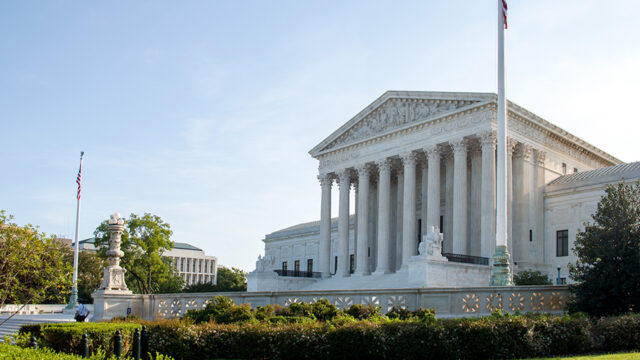B is for belief, the foundation of life

A professor announced to a new class of medical students: “I have good news and bad news: The good news is that half of the material you learn in medical school will survive all scrutiny and investigation. The other half of what we teach you, however, will be proven incorrect. The bad news is we have no way of knowing which half is which!”
So, in what or whom can we truly believe? Sometimes determining the answer to this question is tough! Yet belief is essential to human existence and organization—and has tremendous power.
Power of Belief
Belief—or faith, within a religious setting—has been shown to have statistically significant benefits that exceed the placebo effect. When the religious experience of Americans who reached the age of 100 was studied, researchers found that religiosity significantly enhanced health.1
A study comparing mortality rates between secular and religious kibbutzim (collective agricultural communities in Israel), found a decreased mortality rate over a 15-year follow-up in the religious group. The age-adjusted risk of premature death of members of the secular kibbutz was 1.8 times higher for males and 2.7 times higher for females when compared with the religious kibbutz.2
A study of African-Americans found that those who engaged in organized religious activities had improved health and life satisfaction.3 Duke University researcher C. G. Ellison found that a lack of religious affiliation increases the risk of depression in African-Americans.4
A connection between social relationships and survival has been documented in several studies. C. J. Schoenbach, et al., have noted this effect, particularly among white males.5
Improved Quality of Life
One of the most consistent findings across all racial groups is that spirituality profoundly improves the quality of life.6 Spirituality helps not only believers but also nonbelievers in the community. Research has found that communities gain health benefits when they have higher numbers of adherents to faiths that emphasize implicit obedience to God and His standards of conduct.7 The reason is likely that their social norms favor conformity to the more healthful lifestyle embraced by their religious neighbors.
Religious people—particularly adolescents from religious homes who frequently attend religious services, pray, and read Scripture—have fewer problems with alcohol, tobacco, or other drugs than do their nonreligious peers.8
Religion was positively associated with emotionally healthy values and socially accepted behaviors such as tutoring or other volunteer activities often promoted by religious organizations.9
Belief in God also may be associated with reduction in stress, depression, and loneliness.
Benefits of Prayer
An Ohio study10 examined the effects of prayer on well-being. Of the 560 respondents, 95 percent classified themselves as religious people. Four types of prayer were identified:
1. Petitionary prayer: asking for material things you may need.
2. Ritual prayer: reading the book of prayers.
3. Meditative prayer: “feeling,” or being, in His presence.
4. Colloquial prayer: talking as to a friend and asking God for guidance in making decisions.
The study revealed that colloquial prayer correlates best with happiness and religious satisfaction. Talking to God as to a friend, telling Him all our joys and sorrows, can bring happiness, healing, and religious satisfaction.
Peace of Mind
The Bible says, “You will keep in perfect peace all who trust in you, all whose thoughts are fixed on you!” (Isa. 26:3). When we have a close relationship with God, we experience peace of mind.
This does not mean that those who believe in God and trust Him implicitly will be free from problems. “Trouble and turmoil may surround us, yet we enjoy a calmness and peace of mind of which the world knows nothing. . . . The peace of the Christian depends not upon peaceful conditions in the world about him but upon the indwelling of the Spirit of God.”11
Trusting in a loving, powerful God provides us with the ability to enjoy a healthful lifestyle. Belief and faith in God enables Him to fill our lives with abundant peace and joy.
Fred Hardinge is now retired, but formerly served as associate director of Health Ministries.
Read more in our CELEBRATIONS series:
01 Choices: https://www.adventistworld.org/lets-celebrate-choices/
02 Exercise: https://www.adventistworld.org/lets-celebrate-exercise/
03 Liquids: https://www.adventistworld.org/lets-celebrate-liquids/
04 Environment: https://www.adventistworld.org/lets-celebrate-the-environment/
1 J. S. Levin, H. Y. Vanderpool, “Is frequent religious attendance really conducive to better health? Toward an epidemiology of religion,” Social Science and Medicine, 1987; 24(7): pp. 589-600.
2 J. D. Kark, et al. American Journal of Public Health, 1996: 86(3); pp. 341-346.
3 J. S. Levin, L. M. Chatters, R. J. Taylor, “Religious effects on health status and life satisfaction among black Americans,” The Journals of Gerontology, Series B: Psychological Sciences and Social Sciences, 1995 May;50(3): pp. S154-163.
4 C. G. Ellison, “A Race, Religious Involvement and Depressive Symptomatology in a South Eastern US Community,” Social Science and Medicine, 1995:40(11); pp. 1561-1572.
5 V. J. Shoenback, et al. “Social Ties and Mortality in Evans County GA,” American Journal of Epidemiology, 1986; 123: pp. 577-591.
6 C. G. Ellison, “Religious involvement and subjective well-being,” Journal of Health and Social Behavior, 1991 Mar;32(1): pp. 80-99.
7 J. W. Dwyer, L. L. Clarke, M. K. Miller, “The effect of religious concentration and affiliation on county cancer mortality rates,” Journal of Health and Social Behavior, 1990 Jun;31(2): pp. 185-202.
8 H. G. Koenig, The Healing Power of Healing Faith, p.72, 1999 Quoting P H Hardestyn and K M Kirby. “Relation Between Family Religious and Drug Use Within Adolescent Peer Groups,” Journal of Social Behavior and Personality 10:(1) 1995; pp. 42-30.
9 Amoatin and S. J. Bahr, “Religion, Family and Adolescent Drug Use,” Social Perspectives 29:(1) 1986; pp. 53-76.
10 Journal of Psychology and Theology, 1991; 19(1): pp. 71-83.
11 The SDA Bible Commentary, vol. 4 (Hagerstown, Md., Review and Herald Publishing Association, 1966), p. 203.








